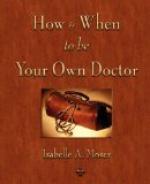My proposed dissertation topic met with nothing but opposition. The professors on my doctoral committee had never heard of the word orthomolecular, and all of them were certain it wasn’t an accepted, traditional area of research. Research in academia is supposed to be based on the works of a previous researchers who arrived at hypothesis based on data obtained by strictly following scientific methodology. “Scientific” data requires control groups, matched populations, statistical analysis, etc. In my case there was no previous work my dissertation committee would accept, because the available data did not originate from a medical school or psychology department they recognized.
Due to a lot of determination and perseverance I finally did succeed in getting my thesis accepted, and triumphed over my doctoral committee. And I graduated with a dual Ph.D. in both counseling psychology and gerontology. My ambition was to establish the orthomolecular approach on the west coast. At that time I knew of only two clinics in the world actively using nutritional therapy. One was in New York and the other, was a Russian experimental fasting program for schizophrenics. Doctors Hoffer and Osmond had used orthomolecular therapy in a Canadian mental hospital as early as 1950, but they had both gone on to other things.
The newly graduated Dr. Isabelle Moser, Ph.D. was at this point actually an unemployed mother, renting an old, end-of-the-road, far-in-the-country farmhouse; by then I had two small daughters. I strongly preferred to take care of my own children instead of turning them over to a baby sitter. My location and my children made it difficult for me to work any place but at home. So naturally, I made my family home into a hospital for psychotic individuals. I started out with one resident patient at a time, using no psychiatric drugs. I had very good results and learned a tremendous amount with each client, because each one was different and each was my first of each type.
With any psychotic residing in your home it is foolhardy to become inattentive even for one hour, including what are normally considered sleeping hours. I have found the most profoundly ill mentally ill person still to be very crafty and aware even though they may appear to be unconscious or nonresponsive. Psychotics are also generally very intuitive, using faculties most of us use very little or not at all. For example one of my first patients, Christine, believed that I was trying to electrocute her. Though she would not talk, she repeatedly drew pictures depicting this. She had, quite logically within her own reality, decided to kill me with a butcher knife in self-defense before I succeeded in killing her. I had to disarm Christine several times, hide all the household knives, change my sleeping spot frequently, and generally stay sufficiently awake at night to respond to slight, creaky sounds that could indicate the approach of stealthily placed small bare feet.




